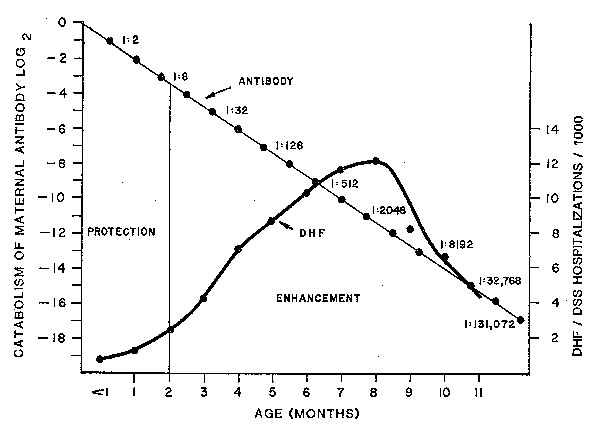Volume 8, Number 12—December 2002
Perspective
Dengue Hemorrhagic Fever in Infants: Research Opportunities Ignored
Figure 5

Figure 5. Relationship between the age distributions of infants hospitalized for dengue hemorrhagic fever/dengue shock syndrome (DHF/DSS) and the protective and infection-enhancing effects of maternal dengue antibodies. Shown are mean age specific hospitalization rate/1,000 for Bangkok and Thonburi, 1962–1964 (see Figure 1). At birth, antibodies are at protective concentrations. With the passage of time, maternal immunoglobulin G antibodies are catabolized to concentrations that result in antibody-dependent enhancement (ADE) of infections. By the end of the first year of life, ADE antibodies are catabolized to concentrations below the ADE threshold, and DHF/DSS cases disappear.
Page created: July 19, 2010
Page updated: July 19, 2010
Page reviewed: July 19, 2010
The conclusions, findings, and opinions expressed by authors contributing to this journal do not necessarily reflect the official position of the U.S. Department of Health and Human Services, the Public Health Service, the Centers for Disease Control and Prevention, or the authors' affiliated institutions. Use of trade names is for identification only and does not imply endorsement by any of the groups named above.